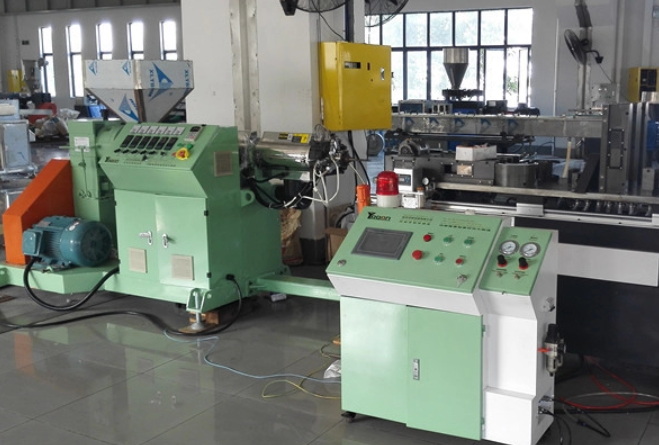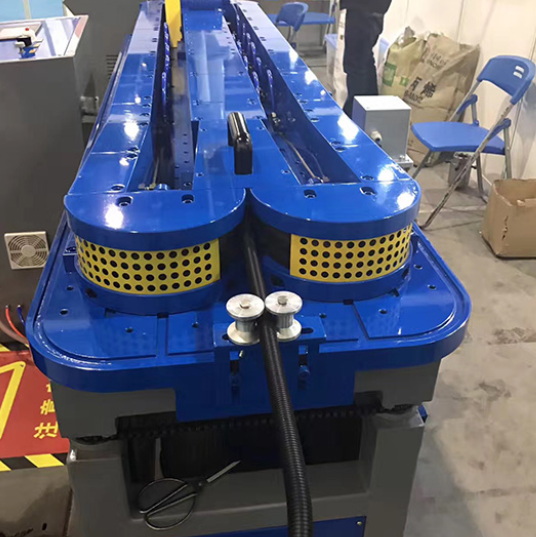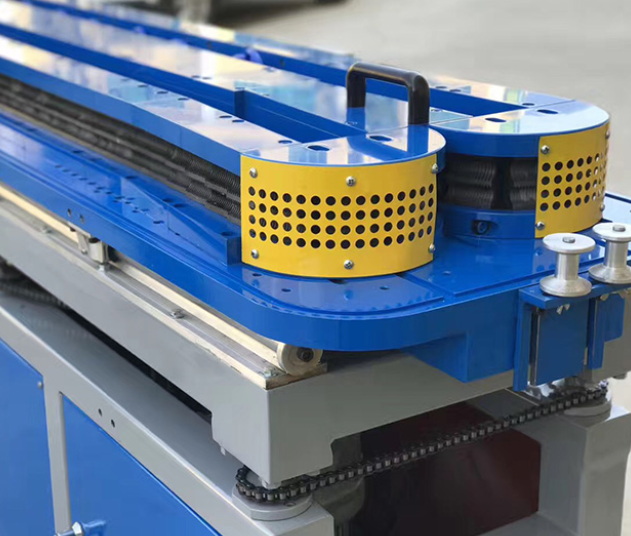Content Menu
● 1. Material Selection and Polymer Optimization
>> Advantages of HDPE and PP Polymers
>> Role of Extrusion Equipment
● 2. Precision Engineering of Corrugated Profiles
>> Structural Benefits of Corrugation
>> Key Equipment Features
● 3. Enhanced Production Process Controls
>> Real-Time Monitoring Systems
>> Impact on Durability
● 4. Post-Extrusion Treatments
>> Common Treatments
● 5. Quality Assurance Mechanisms
>> Testing Protocols
>> Integrated Quality Control Systems
● 6. Environmental Sustainability and Durability
● Conclusion
● FAQ
>> Q1: How does HDPE compare to PVC in corrosion resistance?
>> Q2: What maintenance practices extend the lifespan of extrusion equipment?
>> Q3: Can corrugated pipe extrusion equipment produce earthquake-resistant pipes?
>> Q4: How do energy costs compare between modern extrusion lines and traditional methods?
>> Q5: What certifications validate the durability claims of corrugated pipes?
Corrugated pipe extrusion equipment plays a pivotal role in manufacturing durable and reliable piping systems. These systems are widely used in various industries, including construction, agriculture, drainage, and industrial applications. The durability of corrugated pipes is a result of advanced manufacturing techniques, material optimization, and precision engineering enabled by cutting-edge extrusion machinery. This article explores the mechanisms through which corrugated pipe extrusion equipment enhances product durability, delving into material science, production processes, quality assurance protocols, and more.

1. Material Selection and Polymer Optimization
One of the primary factors influencing the durability of corrugated pipes is the selection of high-performance materials. Modern extrusion equipment allows for the processing of advanced polymers such as high-density polyethylene (HDPE) and polypropylene (PP), which offer exceptional durability characteristics.
Advantages of HDPE and PP Polymers
- Chemical Resistance: These materials resist degradation from acids, alkalis, and industrial effluents, making them ideal for harsh environments.
- UV Stabilization: Additives incorporated during extrusion protect pipes from ultraviolet radiation, ensuring longevity in outdoor applications.
- Flexural Strength: HDPE and PP maintain structural integrity under bending stresses, reducing the risk of cracking or deformation.
Role of Extrusion Equipment
State-of-the-art extrusion machines enhance material properties through:
- Twin-Screw Extruders: These enable precise temperature control (±1°C), ensuring uniform polymer melting.
- Vacuum-Assisted Feeding Systems: These systems prevent contamination during material handling, preserving polymer purity.
The combination of optimized materials and precise processing ensures that the final product meets stringent durability requirements.
2. Precision Engineering of Corrugated Profiles
The unique structure of corrugated pipes contributes significantly to their durability. The corrugation process involves forming ribbed profiles that provide mechanical strength while minimizing material usage.
Structural Benefits of Corrugation
| Feature | Durability Benefit |
| Ribbed Geometry | Provides 40% higher crush resistance compared to smooth pipes. |
| Double-Wall Design | Separates hydraulic functions from structural support. |
| Wall Thickness Control | Ensures consistent performance with ±0.1mm tolerance. |
Key Equipment Features
- Rotating Mold Blocks: These shape the pipe's corrugations with high precision, using durable materials like aviation-grade aluminum alloys.
- Co-Extrusion Dies: These allow for the simultaneous extrusion of multiple layers, enabling double-wall designs.
- Laser Measurement Systems: These systems ensure wall thickness consistency and detect deviations in real time.
Through these innovations, corrugated pipe extrusion equipment produces pipes with enhanced mechanical properties capable of withstanding heavy loads and environmental stresses.
3. Enhanced Production Process Controls
Modern extrusion lines integrate advanced process controls that ensure consistent quality and durability throughout production.
Real-Time Monitoring Systems
1. Material Consistency Detection: Sensors monitor melt flow index (MFI) deviations to prevent weak spots in the pipe.
2. Automatic Speed Adjustment: Haul-off units dynamically adjust speeds (0.5–6 m/min) to maintain uniformity.
3. Closed-Loop Cooling Systems: Water temperature is controlled within ±2°C to prevent thermal stresses during cooling.
Impact on Durability
These controls result in:
- Pipes with a 50+ year service life in buried applications.
- A 300% improvement in fatigue resistance compared to manually produced pipes.
- Enhanced resistance to cracking under cyclic loading conditions.
By automating critical aspects of production, extrusion equipment minimizes human error and ensures that every pipe meets high durability standards.

4. Post-Extrusion Treatments
Post-extrusion treatments further enhance the durability of corrugated pipes by addressing specific performance requirements.
Common Treatments
- In-Line Socket Forming: This process creates leak-proof joints that improve hydraulic efficiency and prevent infiltration or exfiltration.
- Surface Texturing: Textured surfaces increase abrasion resistance, making pipes suitable for high-flow applications involving suspended particles.
- Antistatic Coating: This reduces particulate adhesion in industrial environments where static electricity could attract debris.
These treatments are seamlessly integrated into modern extrusion lines, ensuring that pipes are ready for immediate use without requiring additional processing steps.
5. Quality Assurance Mechanisms
Durability is not only about manufacturing processes but also about rigorous quality assurance protocols that validate product performance under real-world conditions.
Testing Protocols
1. Hydrostatic Pressure Testing: Pipes are subjected to 1.5 times their rated pressure for 24 hours to ensure they can withstand extreme conditions.
2. Impact Testing: Pipes must meet a minimum impact resistance threshold of 5kJ/m².
3. Roundness Verification: Ovality is measured to ensure it remains within 2% tolerance limits.
Integrated Quality Control Systems
Modern extrusion equipment incorporates automated testing systems that:
- Continuously monitor product dimensions using laser scanners.
- Perform non-destructive testing (NDT) to detect internal defects.
- Generate detailed reports for traceability and compliance with standards such as ISO 21138-3 and ASTM F2648.
Through these measures, manufacturers can guarantee that every pipe meets or exceeds industry durability benchmarks.
6. Environmental Sustainability and Durability
Durability is closely linked to sustainability because longer-lasting products reduce waste and resource consumption over time. Corrugated pipe extrusion equipment contributes to sustainability through:
- Material Efficiency: Corrugated designs minimize material usage without compromising strength.
- Recyclable Materials: HDPE and PP are fully recyclable at the end of their service life.
- Energy-Efficient Production: Advanced systems reduce energy consumption by up to 40% compared to older technologies.
By producing durable and eco-friendly products, modern extrusion lines align with global sustainability goals while delivering superior performance.
Conclusion
Corrugated pipe extrusion equipment enhances product durability through a combination of advanced material science, precision engineering, automated process controls, post-extrusion treatments, and rigorous quality assurance protocols. These innovations enable the production of pipes capable of withstanding harsh environmental conditions, mechanical stresses, and long-term wear. With service lives exceeding 50 years in demanding applications such as drainage systems and industrial pipelines, corrugated pipes manufactured using modern extrusion equipment represent a benchmark for durability and reliability.

FAQ
Q1: How does HDPE compare to PVC in corrosion resistance?
A1: HDPE outperforms PVC with 10 times higher chemical resistance, particularly against hydrocarbons and acidic environments commonly encountered in industrial applications.
Q2: What maintenance practices extend the lifespan of extrusion equipment?
A2: Regular maintenance includes monthly screw inspections, lubrication of moving parts, and annual replacement of mold blocks after approximately 10,000 production cycles to prevent wear-related defects.
Q3: Can corrugated pipe extrusion equipment produce earthquake-resistant pipes?
A3: Yes, these machines can produce flexible joint designs with up to 35° bend capability and energy-absorbing rib patterns that enhance seismic resilience.
Q4: How do energy costs compare between modern extrusion lines and traditional methods?
A4: Modern extrusion lines reduce energy consumption by up to 40% through innovations such as regenerative braking in haul-off units and energy-efficient heating systems.
Q5: What certifications validate the durability claims of corrugated pipes?
A5: Certifications such as ISO 21138-3 (for buried flexible drainage systems), ASTM F2648 (for thermoplastic drainage pipes), and EN13476-3 (for structured wall piping systems) confirm compliance with international durability standards.






















